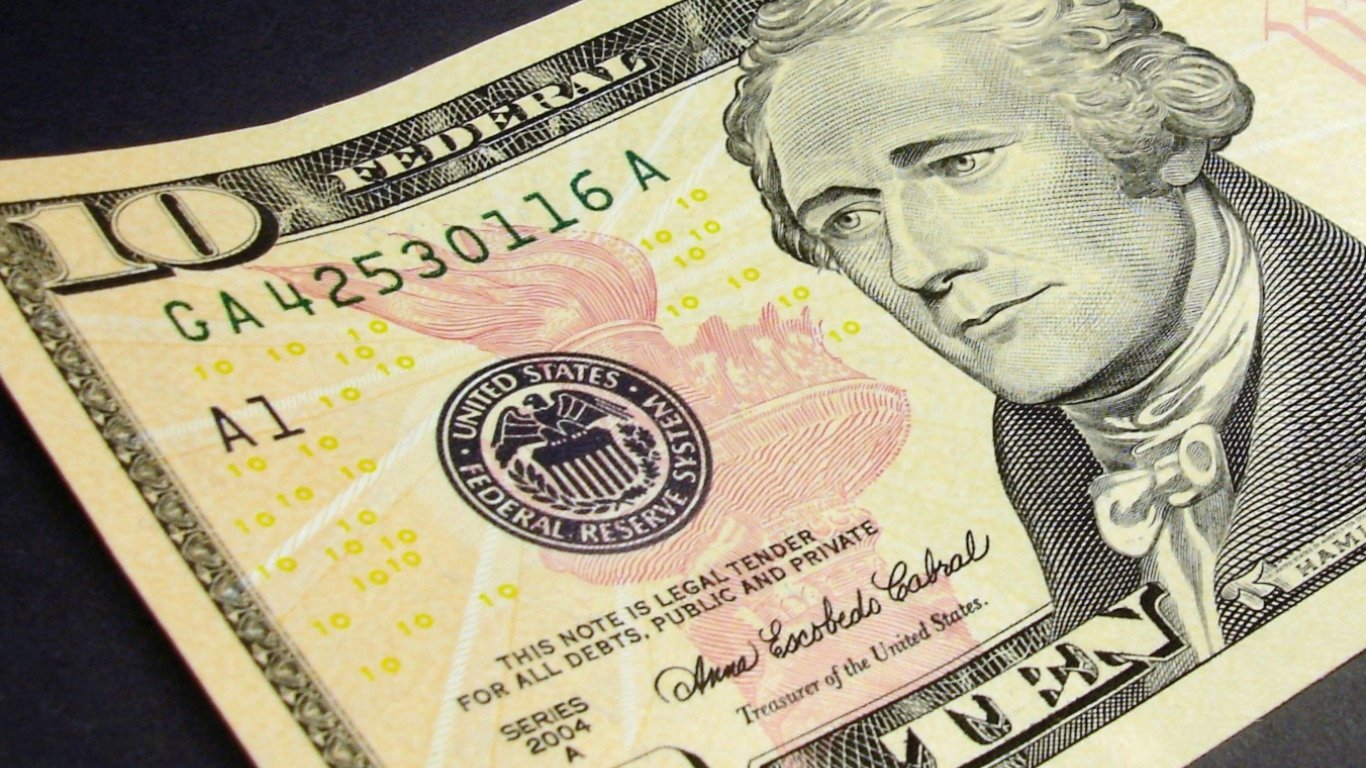

The last week of August proved to be one in which the salvos in the trade war between the United States and China took a breather. On top of President Trump’s statement that China wanted to come back to the negotiating table was some lightening news out of China itself, with the trade ministry saying that it did not want to keep piling on to the trade war. While less negative news is, of course, a positive, there is no resolution yet, and that resolution will either take a long time to see and it may not be an outright “OK, we’re best buddies again!” As of now, tariffs appear to be on schedule. All that said, the financial markets reacted favorably in the past week over less new tension. What really matters at this point is ignoring some of the headlines and doing a real-world analysis to see what is really at stake.
If the public only listened to the talking heads on TV or the rants on social media, the trade war is the end of the world and the end of the U.S. recovery as we know it. The reality is something quite different. It’s important to consider what the real numbers are behind imports and exports in the scale of the broad U.S. economy — and China’s latest manufacturing data will feel like a recession there. The U.S. gross domestic product is currently running over $21 trillion. The GDP reading peaked at $14.8 trillion in 2008, before getting hammered during the Great Recession, and it took until the second quarter of 2010 to get back above that figure. At the end of 2016, U.S. GDP was $18.9 trillion.
24/7 Wall St. tracked multiple Dow and key company moves from Friday, August 30, 2019, compared with the close a week earlier. Technology stocks were excluded because almost all have direct exposure and even more indirect exposure to China. We also have taken data directly from the Office of the U.S. Trade Representative (USTR) first to show what the actual trade numbers are as of 2018.
The USTR showed that China was the third-largest U.S. goods export market in 2018 with a total of $120.3 billion in goods sent there. That was actually down by 7.4% from 2017, but the USTR showed that it was up 72.6% from 2008 and up 527% from 2001 before China joined the World Trade Organization.
Where the proof that China has more to lose than the United States is on how much the U.S. imports in goods that come from China. The tally of $539.5 billion in imported goods from China in 2018 alone was 6.7% higher than in 2017. The United States imports from China were shown to be up by 59.7% from 2008 and up 427% from 2001, before China’s WTO accession. All in all, U.S. exports to China account for 7.2% of overall U.S. exports and U.S. imports from China account for 21.2% of total U.S. imports in 2018. That’s $120 billion in goods sent there versus $539.5 billion we have taken in.
It’s imperative to keep in mind that the United States is now really a services and materials economy rather than a manufacturing one like China. U.S. imports of services from China were $18.4 billion, versus $58.9 billion in U.S. exports of services to China in 2018. The USTR showed that the leading services exports from the United States to China were in travel, intellectual property (trademark, computer software) and transport sectors. The $41.5 billion in services surplus pales in comparison to the goods deficit of more than $419 billion.
Once you look at the categories of what we import from China and what we export to China, it’s easy to see how and why the stocks of American companies most dependent on China as suppliers or as customers are getting pinched by the stock market. The top import categories from China into the United States in 2018 were as follows: electrical machinery ($152 billion), machinery ($117 billion), furniture and bedding ($35 billion), toys and sports equipment ($27 billion) and plastics ($19 billion).
The top export categories by the United States to China were ranked as follows: aircraft ($18 billion), machinery ($14 billion), electrical machinery ($13 billion), optical and medical instruments ($9.8 billion) and vehicles ($9.4 billion). U.S. total exports of agricultural products to China were $9.3 billion in 2018, with China being the fourth largest agricultural export market, ranked as follows: soybeans ($3.1 billion), cotton ($924 million), hides and skins ($607 million), pork and pork products ($571 million) and coarse grains excluding corn ($530 million).
A.O. Smith Corp. (NYSE: AOS) manufactures residential and commercial gas and electric water heaters, boilers, tanks and water treatment products and is about one-third reliant on China. After a 0.8% rise to $46.52 on Friday, A.O. Smith shares closed the week up 3.3%, and they are still down about 23% from the high.
Apple Inc. (NASDAQ: AAPL) has seen its shares rise and fall with news on China, but it also has an iPhone refresh cycle coming soon. Most important in this context is that just about everything made by and for Apple is manufactured in China, and the company also sells into China. Apple closed down 0.1% at $208.74 a share on Friday, but this was a one-week gain of 3%, and Apple is down roughly 10% from its 52-week high.
Boeing Co. (NYSE: BA) has seen its shares not directly as affected out of China due to its ongoing woes (and maybe even progress) on the 737 Max. Boeing closed up 0.37% at $364.09 on Friday, and its gain for the week was 2.27%. Boeing shares are still down almost 20% from their highs prior to the 737 Max crashed and subsequent grounding. This remains a 737 Max recovery story despite having sales exposure of jets to China. That said, the USTR notes about $18 billion in exposure to aircraft exports should imply Boeing and the company’s 2018 annual report showed direct revenue to China as being $13.7 billion and other Asia revenues (excluding China) of $12.1 billion.
Bunge Ltd. (NYSE: BG) may not be the dominant food company in America, with its $7.5 billion market cap, but when the news talks about soybeans investors should think of Bunge. Shares closed up 1.5% at $53.41 on Friday, which allowed for a small gain of just 0.4% for the week, and they are still down about 25% from the 52-week high.
Caterpillar Inc. (NYSE: CAT) sells large amounts of its heavy earth and infrastructure building equipment to China and the Asia Pacific region, and the international component was about 59% of total revenues in 2018. Its shares were up 1% at $119.900 on Friday, and it was up 4.3% from the prior week’s close. Caterpillar is still down about 25% from its 52-week high.
Deere & Co. (NYSE: DE) has farming exposure globally, but slower or no imports from China will hurt Deere in many markets. Deere was actually down 1% at $154.91 on Friday, but it still rose over 5% from the prior week. The stock is still down close to 10% from its 52-week high.
General Motors Co. (NYSE: GM) has frequently been said to sell more cars in China than in the United States. Whether that holds true in the future and whether manufacturing stays or migrates remains to be seen. GM was up 0.5% at $37.09 on Friday, but that was a gain of almost 3% for the week, and it is still down almost 11% from its 52-week high. GM’s dividend yield is over 4%.
Nike Inc. (NYSE: NKE) continues to have a big reliance on China and Asia Pacific manufacturing and destination. Its shares closed down 1% at $84.50 on Friday, but it rose 5% over the course of the week, even after Friday’s loss. Nike is down about 6% from its 52-week high.
The top technology sector stocks took it on the chin as well, and there is zero chance that any of these companies can immediately mitigate their exposure to China via manufacturing, parts inclusion and selling into the country. Intel Corp. (NASDAQ: INTC) has a market cap north of $200 billion, and its shares closed up 1.15% at $47.41 on Friday. That’s a gain of 5.45% for the week, and Intel’s 52-week high is $59.59. Advanced Micro Devices Inc. (NASDAQ: AMD) was flat at $31.45 on Friday, but it rose 6.5% over the last week. AMD is now down only about 10% from its high.
Nvidia Corp. (NASDAQ: NVDA) has a $100 billion market cap and closed up 0.3% at $167.51 on Friday. Its gain for the week was 3.1%, and it is still down about 40% from its highs of $292.76. Nvidia’s woes and worries around sales into artificial intelligence, autonomous vehicles, bitcoin and cryptocurrency mining markets go beyond just China.
Qualcomm Inc. (NASDAQ: QCOM) has close to a $95 billion market cap, and its shares closed up 1.7% on Friday at $77.77, for a gain of 5.8% from the prior week’s close. Qualcomm’s 52-week high is $90.34. As the dominant processor for smartphones, there is no escaping China here. And guess which nation that rhymes with China was the one to block the Qualcomm-NXP Semiconductor merger in the past (Hint: it’s China).
Micron Technology Inc. (NASDAQ: MU) is the independent pure-play leader in memory, and it has 50% exposure to China as its chips might end up in anything that needs DRAM or flash memory. Micron was up 1.3% at $45.27 on Friday, and its gain was about 5.4% for the week.
As a reminder, 24/7 Wall St. showed ahead of this week’s recovery how some of the top Chinese stock reactions are starting to be less severe than some of the reactions in their American counterparts. These are obviously not the only companies that have direct exposure to China, nor do include some of the smaller companies that have an even larger exposure to China. If tensions are rekindled, it’s important to understand where the tariffs actually will hit on both sides of the equation.
If things just feel too dicey and rocky, think about 10 lessons of sanity from Warren Buffett during insane markets.
Take This Retirement Quiz To Get Matched With An Advisor Now (Sponsored)
Are you ready for retirement? Planning for retirement can be overwhelming, that’s why it could be a good idea to speak to a fiduciary financial advisor about your goals today.
Start by taking this retirement quiz right here from SmartAsset that will match you with up to 3 financial advisors that serve your area and beyond in 5 minutes. Smart Asset is now matching over 50,000 people a month.
Click here now to get started.
Thank you for reading! Have some feedback for us?
Contact the 24/7 Wall St. editorial team.
 24/7 Wall St.
24/7 Wall St.


